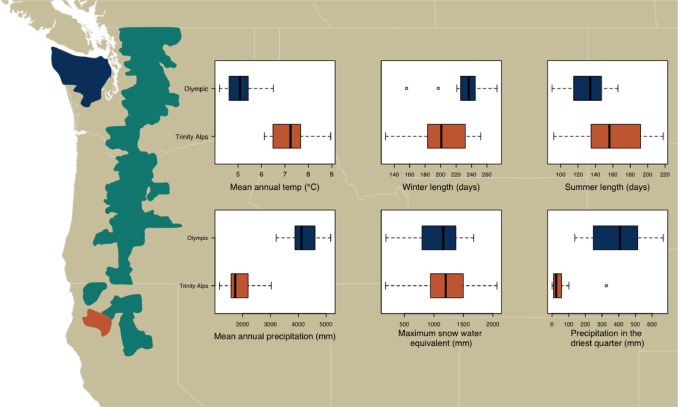Contrasting demographic responses under future climate at multiple life stages for two populations of a montane amphibian
https://www.sciencedirect.com/science/article/pii/S2666900523000175?via%3Dihub#fig0001
Abstract/Summary
For species with complex life histories, climate change can have contrasting effects for different life stages within locally adapted populations and may result in responses counter to general climate change predictions. Using data from two, 14-year demographic studies for a North American montane amphibian, Cascades frog (Rana cascadae), we quantified how aspects of current climate influenced annual survival of larvae and adult stages and modeled the stochastic population growth rate (?s) of each population for current (1980-2006) and future periods (2080s). Climate drivers of survival for the populations were similar for larvae (i.e. decreases in precipitation lead to pond drying and mortality), but diverged for terrestrial stages where decreases in winter length and summer precipitation had opposite effects. By the 2080s, we predict one population will be in sharp decline (?s = 0.90),while the other population will remain nearly stable (?s = 0.99) in the absence of other stressors, such as mortality due to disease. Our case study demonstrates a result counter to many climate envelope predictions in that stage-specific responses to local climate and hydrology result in a higher extinction risk for the more northern population.
Publication details
| Published Date: | 2024-01-03 |
| Outlet/Publisher: | Climate Change Ecology |
| Media Format: | URL |
ARMI Organizational Units:
Pacific Northwest - BiologyTopics:
DroughtPlace Names:
CaliforniaWashington
Keywords:
amphibian declineclimate change
demographics

